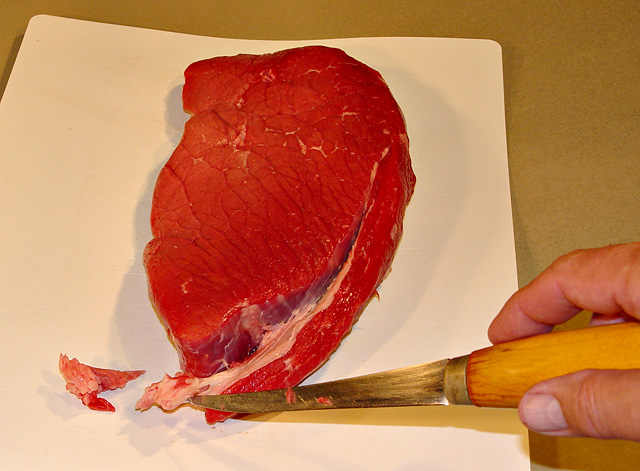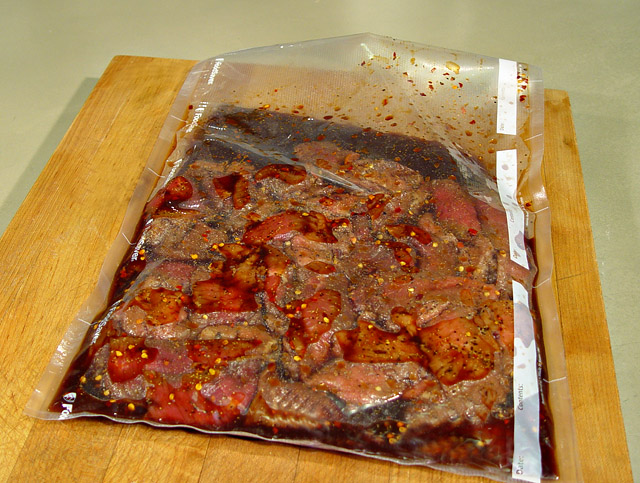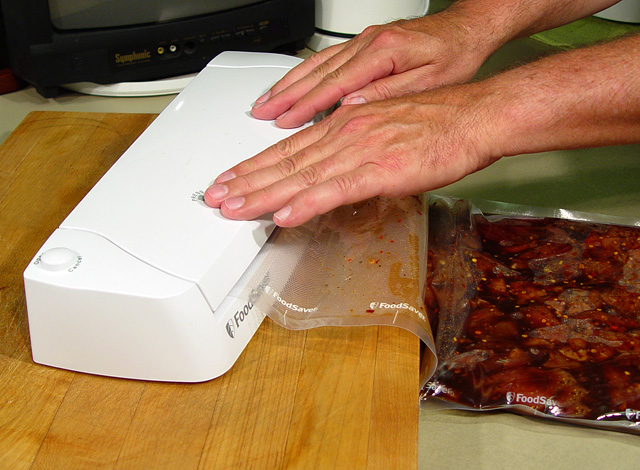 for something you will be trimming off and discarding. Fat does not dehydrate well, in fact it will become rancid, so you don’t want any on your finished Beef Jerky.
for something you will be trimming off and discarding. Fat does not dehydrate well, in fact it will become rancid, so you don’t want any on your finished Beef Jerky.I have used various cuts of meat, such as Round Steak, Brisket, and London Broil. They all make good jerky meats, but I have settled on London Broil as my favorite cut for Jerky. Round Steak is usually packaged with a fair amount of fat that will have to be discarded. Brisket works well, but can be pretty tough and stringy, as well as having a thick layer of fat to remove.
 On a cutting board or mat, trim up the meat, removing as much of the fat as you can. I am working with a London Broil steak here. Slice the steak up into thin strips. The thickness is up to you, as to how you like your Jerky. Thin strips dry quicker and more thoroughly. Thicker strips stay a bit more moist and chewy. You have the option of making some of both of course.
On a cutting board or mat, trim up the meat, removing as much of the fat as you can. I am working with a London Broil steak here. Slice the steak up into thin strips. The thickness is up to you, as to how you like your Jerky. Thin strips dry quicker and more thoroughly. Thicker strips stay a bit more moist and chewy. You have the option of making some of both of course.
Place the sliced up meat strips into a Food Saver Bag.

 Vacuum Seal the bag with the Food Saver machine.
Vacuum Seal the bag with the Food Saver machine.
It’s not a bad idea to label the Food Saver Bag with Contents and Date. If you happen to get too busy to dehydrate the meat for a few days, you can just pop the bag into the freezer after the curing time, and dehydrate it at a later date. The vacuumed sealed bags offer a lot of flexibility.
after the curing time, and dehydrate it at a later date. The vacuumed sealed bags offer a lot of flexibility.
Place the bag into your refrigerator following the Morton Salt recommendations.
This is where I diverge from Morton’s recommendation. I leave the meat bag in the refrigerator overnight, usually for 24 hours. If in doubt, follow Morton’s steps including the baking time in your oven.
(Click on Pictures for a full size view, use your browser's Back button to return)

No comments:
Post a Comment